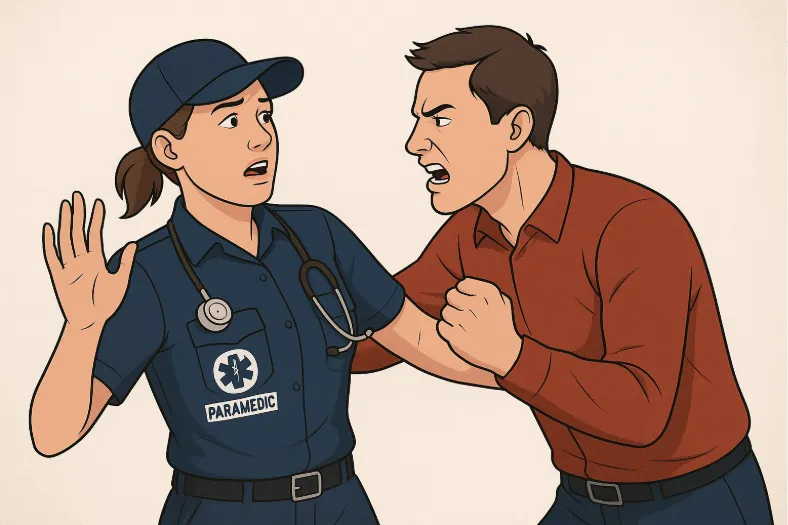Introduction
Emergency Medical Services (EMS) personnel often find themselves exposed to multiple occupational hazards—among them, workplace violence. Recent reports underscore both the frequency and escalating nature of such incidents. This blog explores the current landscape, its impact, and steps toward prevention.
1. The Alarming Reality: Violence Against EMS at Work
-
In Indianapolis, paramedic Grace Denny reports that every paramedic experiences at least one violent patient encounter per week, with crews responding to over 350 calls a day EMS1.
-
Broadly across the U.S., EMS workers face significantly higher injury risks: their injury rates are four times higher than all workers, including over 400 serious violence-related injuries from 2010 to 2020 EMS1.
-
A survey found 67% of U.S. EMS workers experienced verbal violence, while 44% faced physical violence in a single year PMC.
2. What Types of Violence Occur—and Where?
-
A recent study indicates that among EMS personnel, verbal violence accounted for 62.3% of incidents, physical violence for 24.2%, and both in 13.1% of cases BioMed Central.
-
Patients were identified as the primary perpetrators (98%), with most incidents occurring in homes or apartments and around one in five in healthcare facilities BioMed Central.
3. Why Does Violence Go Unreported?
-
Underreporting is widespread. In some studies, only 57% of physical abuse incidents and 40% of verbal abuse incidents were officially reported PMC+1.
-
Common reasons include the perception that violence is “part of the job,” cumbersome reporting processes, or lack of organizational support PMC+1.
4. Global and Systemic Patterns
-
A systematic review found that 57–93% of EMS responders worldwide have experienced verbal and/or physical violence during their careers SAGE Journals.
-
In New England, EMS workers experience 20.3 violent incidents per 100 full-time employees per year, with 38% reporting multiple assaults in six months PMC.
-
Globally, emergency health workers are nearly three times more likely to endure both physical and verbal violence compared to other healthcare roles, affecting up to 95% of healthcare workers overall PMC.
5. Contributing Factors and Context
-
Uncontrolled environments—such as private homes or volatile scenes—often exacerbate aggression against EMS responders FirehouseWikipedia.
-
Factors like fatigue, lengthy shifts, lack of team familiarity, and stressful call types further increase the risk for violence and injury PMCWikipedia.
6. Mitigation Strategies and Interventions
-
Training in de-escalation techniques and risk recognition is critical—even though data on effectiveness varies, it’s still widely recommended PMC+1.
-
Agencies are encouraged to foster a strong safety climate, where protocols and peer support help prevent and reduce injuries PMCWikipedia.
-
Policy solutions such as body armor, distress signals, and better reporting systems are gaining traction. For example, New York City considered requiring EMS body armor and self-defense training after seeing a dramatic rise in assaults—363 incidents in 2022 versus just 15 in 2011, a 2,230% increase New York Post.
7. The Mental Toll and Human Impact
-
Physical assaults are deeply unsettling, but the psychological ramifications—stress, burnout, PTSD—are often more damaging. A paramedic in Victoria reflected that repeated aggressive encounters make one question “Is it worth doing what we’re doing?” Herald Sun.
-
A year-long study in Dallas, Philadelphia, and San Diego confirmed verbal abuse—including threats and racial slurs—is a daily reality for many EMS providers Drexel University.
Conclusion
Violence against EMS workers is pervasive, deeply troubling, and poorly understood. Addressing it effectively requires:
-
Clear reporting procedures and cultural change to reduce normalization.
-
Comprehensive safety training and supportive protocols.
-
Legislative and organizational support—for equipment, mental health, and protections.
-
Continued research and data collection to better understand patterns and prevention strategies.
The safety of EMS professionals is a community responsibility—not only to protect them but ensure they remain able to protect us.

